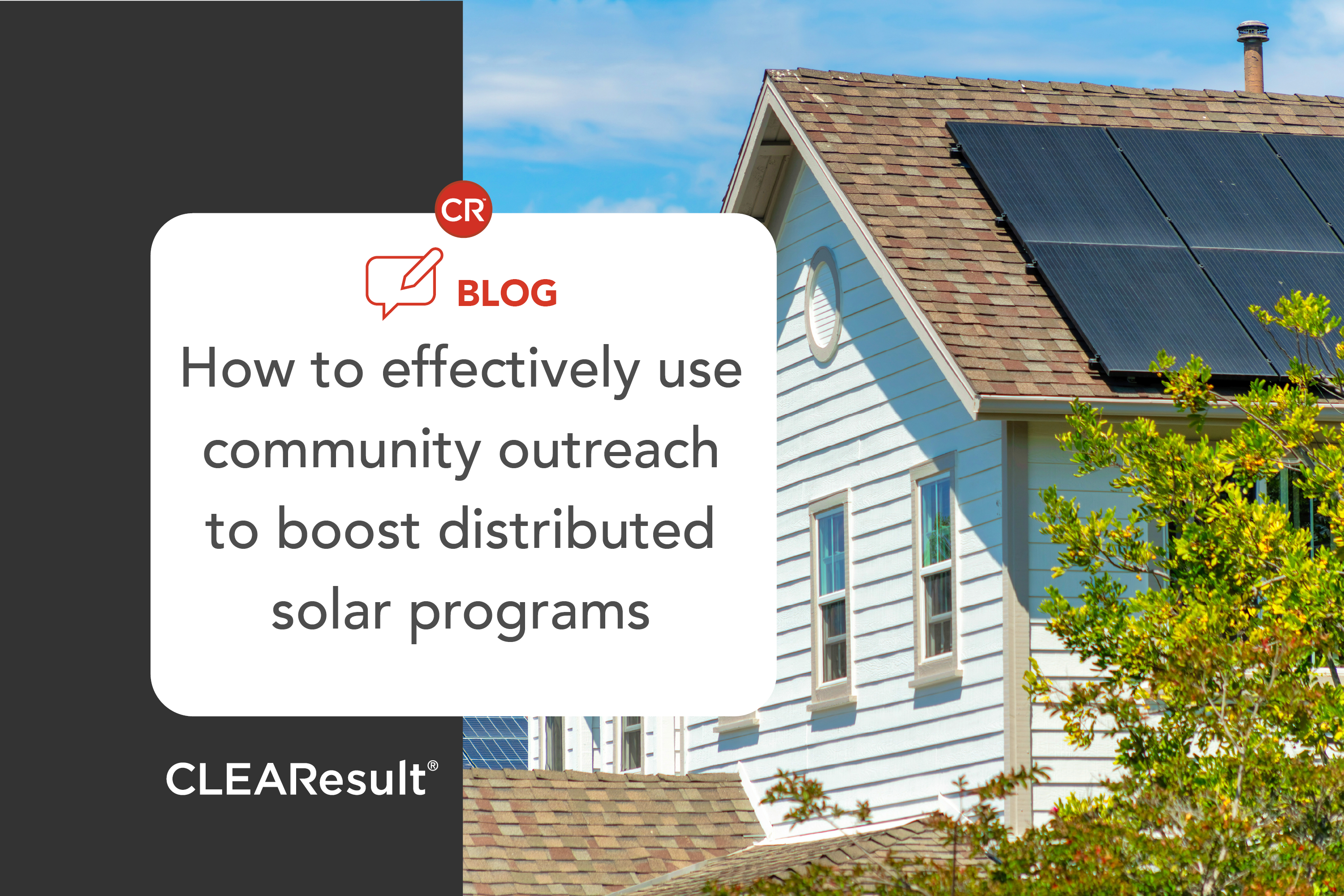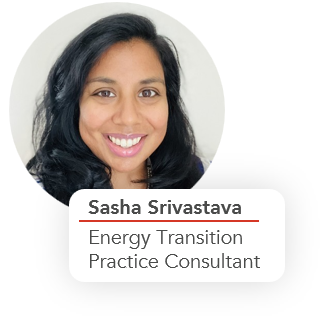How to effectively use community outreach to boost distributed solar programs: Q&A with Sasha Srivastava

 A major focus for states right now is demand side management through the enhancement of existing or development of new distributed solar programs. These programs help provide locally produced energy to communities, while lowering their electric bills. CLEAResult’s Sasha Srivastava, an expert in distributed solar program implementation, shares insights on the importance of community outreach in ensuring the success of such solar initiatives.
A major focus for states right now is demand side management through the enhancement of existing or development of new distributed solar programs. These programs help provide locally produced energy to communities, while lowering their electric bills. CLEAResult’s Sasha Srivastava, an expert in distributed solar program implementation, shares insights on the importance of community outreach in ensuring the success of such solar initiatives.
Why is community outreach a critical component in the design and implementation of distributed solar programs? How does effective outreach enhance program adoption and long-term success?
Early outreach is essential to the successful design and launch of any distributed solar program. Engaging communities from the outset allows for tailored program design that reflects the specific needs and priorities of local residents. This approach not only increases participation but also builds trust and relevance.
While solar programs may share structural similarities nationwide, each state should adapt their approach to meet the unique needs of their target population. Community input ensures that the program is both accessible and impactful.
Effective outreach also relies on trusted messengers. Community liaisons and referrals from current program participants are among the most effective tools for promoting enrollment. Early education efforts provide the necessary lead time for residents to understand the benefits, endorse the program, provide feedback, and share their experiences with others.
What considerations should states keep in mind when planning community outreach for their solar programs? Can you provide examples of successful outreach strategies from similar initiatives?
Understanding the historical context of each community’s local conditions is crucial. Considerations such as the electric grid specifications, a community’s population distribution, the residents’ relationship with energy services and the local weather patterns can help inform why residents may or may not want to participate in a solar program, and how they can potentially benefit from it. Many communities have faced systemic barriers, technical constraints and limited resources that contribute to disproportionately high energy costs. Acknowledging and addressing these root causes is key to designing effective and meaningful outreach strategies.
Tailoring the solar program to local conditions – such as housing types and metering infrastructure – can significantly enhance its effectiveness. Outreach strategies should be adapted to reflect these local characteristics, ensuring that every dollar awarded delivers maximum impact.
Additionally, outreach efforts should align with residents’ existing priorities. For example, integrating solar generation with ongoing weatherization and energy efficiency programs has proven to be a successful strategy. This collaborative approach not only streamlines services but also builds on existing trust and infrastructure.
For states just beginning to integrate community outreach into their solar programs, what practical steps can they take to engage communities and stakeholders? What resources or partnerships should be prioritized to build a strong outreach foundation?
- Engage affordable housing developers early: These stakeholders play a pivotal role in program rollout and can help ensure that solar solutions reach those who may have previously been unable to engage with solar energy.
- Partner with local community organizations: Faith-based groups, neighborhood associations and grassroots organizations are trusted voices that can help build credibility and awareness.
- Clarify program identity: Proactively distinguish solar initiatives to reduce confusion and build a clear, recognizable brand.
_____________________________________
Sasha Srivastava is a seasoned energy professional in solar program administration. She advises on the District of Columbia Sustainable Energy Utility, which fulfills DC’s clean energy and climate goals through community-centered initiatives that deliver lasting value to people and businesses. Sasha specializes in launching demand side solar and storage programs for communities, reducing energy burdens for households. She has received multiple awards for her contributions to the community solar sector and has overseen all aspects of program implementation – from direct participant engagement to managing citywide clean energy initiatives. Sasha holds a B.A. in International Studies from Pepperdine University and an M.S. in Energy Policy and Climate from Johns Hopkins University.